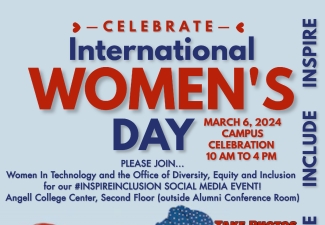Northcountry Planetarium: Plattsburgh's Own Gateway to the Universe
Northcountry Planetarium Director Lisabeth Kissner ’93 wants all her students to appreciate the ancient history of astronomy so that when they look up at the sun, the moon, and the stars, they understand that the heavens are one of the few things they experience with everyone else on the planet.
“When we look up, it is an international, global experience that we share with our ancestors and with the next generation,” said the physics lecturer from inside the 40-seat theater that will be reopened in October during Homecoming after spending five years offline for renovations and upgrading.
First opened in 1964, the planetarium was part of a wave of federal funding that built college and university planetaria across the country in response to the Cold War. When President John F. Kennedy pledged in 1961 that America would send a man to the moon by the end of the decade, “It was a national call to step up our space program,” Kissner said.
Housed in the recently renovated Hudson Hall, its prior renovation in 1999 was made
possible through a Stafford Initiative Grant that brought a Zeiss ZKP3 Skymaster to
campus. The state-of-the-art machine simulates the night sky by projecting light through
dozens of small holes and lenses from two opposing star balls. Its realistic simulation
of the night sky projects more than 7,000 stars down to the human naked-eye limit.
The Zeiss ZKP3 Skymaster is also capable of demonstrating the proper motion of celestial
objects such as sun, moon, planets, stars, and deep space some 3,000 years forward
and backward in time.
The Planetarium will also be used to teach astronomy courses in the physics department.
Zeiss Spacegate
During the more recent 2014 upgrade, two Zeiss Spacegate digital projectors were added. These complement the ZKP3 optical mechanical allowing for complete full-dome coverage of either still celestial imagery or video animation.
Although the theater’s technology was top-notch, its environment was not. The climate in the room wasn’t properly controlled, Kissner remarked, “so the last two years have been spent addressing the issue to get it ready for classes and the public.” It reopened Homecoming Weekend, Oct. 14-15.
In addition to programming for the public, the facility will be used to teach astronomy
courses in the physics department, including a three-credit general education class
and a four-credit laboratory class. Astronomy 102 has 60 to 70 students and Kissner
wants them to see the relevance of astronomy and space science in society and in their
own lives.
Astronomical Misconceptions
Kissner believes the average person doesn’t see why billions of dollars have been spent on space exploration, so one of the sections she teaches is “Common Astronomical Misconceptions in Society.” The topic reveals that many consumer products are the direct result of aerospace technology. “That cell phone you’re holding is, in part, a result of such a spin-off technology. Medical procedures and diagnostics, remote sensing and optics were all further developed and improved as a result of space exploration. Even pharmaceutical and crystal-growth research is done in space and have greatly benefited from research and space exploration.”
Now that the planetarium has reopened, Kissner is working on a new observational astronomy course, as well as a duo course sequence in planetarium operations and productions.
“In five years, I’d love to have my students to be able to tell their kids a constellation
story or read an article about discovering a new planet with a sound understanding
of the subject. Anybody can be an astronomer.”
ACE Alumni
While not everyone can become an astronaut, there are quite a number of jobs in the aerospace industry as well as planetarium education and science. Alumni Jon Bell ’77 is associate professor of physical sciences and planetarium director of Hallstrom Planetarium at Indian River State College in Fort Pierce, Fla.; Dave Maness ’78 is planetarium supervisor at Memphis’s Pink Palace Science Museum; and Dr. Mike Hutton ’72, who, before retiring as associate vice president of information and instructional technology, was director of the Astronaut Memorial Hall Planetarium at Brevard Community College in Cocoa, Fla. Each were student workers at the Northcountry Planetarium.
Bell and Maness have been invited back on campus at Homecoming to speak to students
about their careers as honored guests of the college through its Alumni in the Classroom,
or ACE, program.
Are You a Former Planetarium Worker?
Visit the Northcountry Planetarium’s Facebook page to add your name to its alumni list and learn more about the planetarium’s opening event during Homecoming Oct. 14-15, 2016. Or contact the NCP staff at [email protected].
News

SUNY Recognizes Two Plattsburgh Seniors for Excellence in Academics, Leadership

Sexual Assault Awareness Month Events Planned Throughout April
‘Day of Visibility’ Recognizes, Highlights Members of Transgender Community
SBE Teams with CVPH Medical Center to Train Management Personnel
